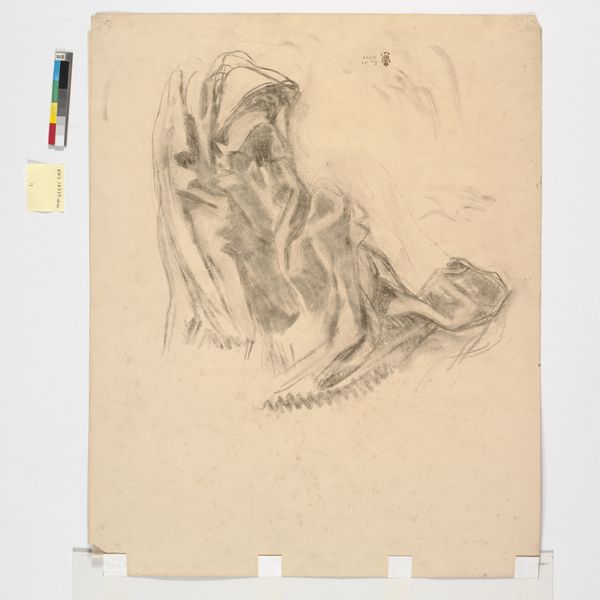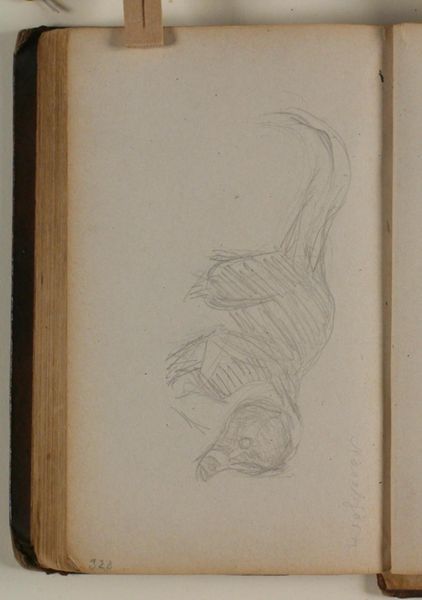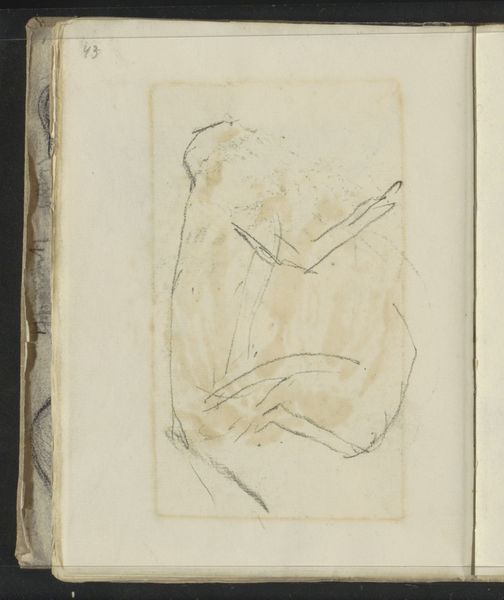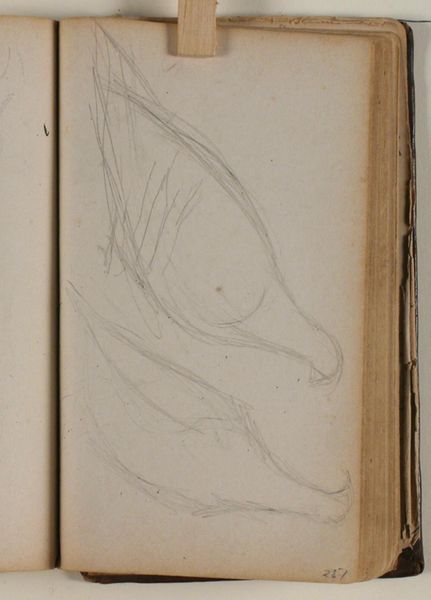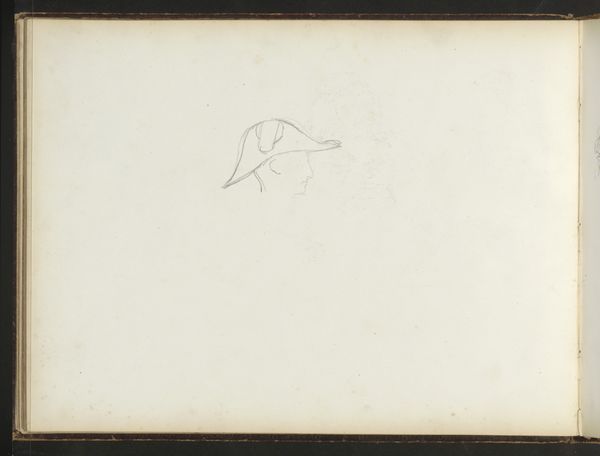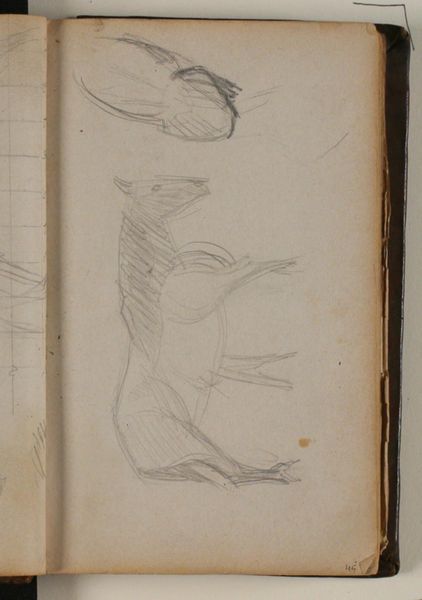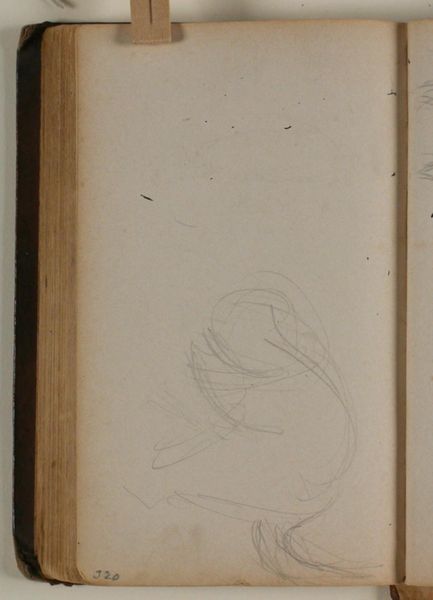
drawing, paper, pencil
#
portrait
#
drawing
#
landscape
#
paper
#
coloured pencil
#
pencil
#
watercolour illustration
#
watercolor
Dimensions: 105 mm (height) x 176 mm (width) (bladmaal)
Martinus Rørbye made this loose sketch of a dog in pencil sometime in the first half of the 19th century. As a key figure in the Danish Golden Age, Rørbye's work often reflected the burgeoning national romanticism of the time. He and his peers were concerned with establishing a distinct artistic identity that would separate their art from other European traditions. The Royal Danish Academy of Fine Arts played a pivotal role. It promoted the study of native landscapes and customs. Rørbye would have been encouraged to observe and document the everyday life around him, elevating the mundane to a subject of artistic merit. This drawing on its own might seem simple, but when we place it in its cultural and institutional context, we begin to appreciate it. It's an example of how art historians look at the social conditions that shape artistic production. It shows how institutions can help artists create their own unique art style. Through resources like letters, exhibition records, and critical reviews, we can understand the complex relationship between art, culture, and society.
Comments
No comments
Be the first to comment and join the conversation on the ultimate creative platform.


